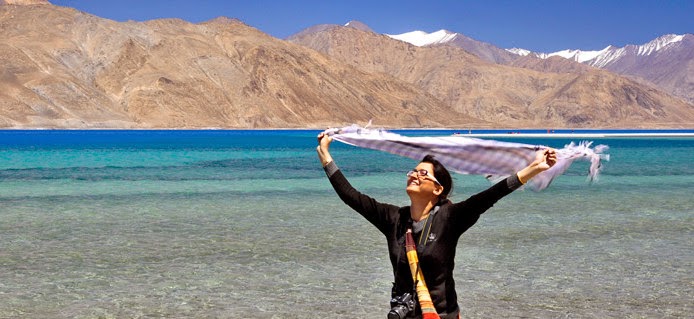Now that you have decided to explore Ladakh on road, how and what to pack is very important. Needs of every individual will vary but the following things shouldn't be missed out on.
CLOTHING: In Ladakh it is best to dress in layers, since majority of coldness is due to wind chill and temperatures can change rapidly depending on the place, time and weather. Hence dressing in layers will allow you to add/subtract layers as and when needed. So make sure apart from your regular clothes, you are also carrying a sweater, gloves, cap (protect head and ears from cold winds), warm inners and if possible, air/water resistant jacket. Pack separately for the road travel and for leh and surroundings.
MEDICINES: Carry Diamox if you aren’t allergic to sulfur drugs as it helps reduce the symptoms of altitude sickness. Additionally, carry general medicines for headache, fever, stomach ache, cold and cough syrup. Also prescribed medicines you are on.CLOTHING: In Ladakh it is best to dress in layers, since majority of coldness is due to wind chill and temperatures can change rapidly depending on the place, time and weather. Hence dressing in layers will allow you to add/subtract layers as and when needed. So make sure apart from your regular clothes, you are also carrying a sweater, gloves, cap (protect head and ears from cold winds), warm inners and if possible, air/water resistant jacket. Pack separately for the road travel and for leh and surroundings.
PERSONAL ESSENTIALS:
- Sunscreen lotion: UV rays at high altitude can be quite damaging to the skin, even during the harshest of winter, so don’t forget to carry a good quality sunscreen lotion
- UV sunglasses: Having decent quality UV sunglasses (Fastrack ones are available for as little as Rs. 800) is quite essential, especially if you are traveling early in the season or during winter, when mountain passes have a lot of snow cover and sunlight reflecting from the snow can be even harsher.
- Lip balm: Dry and cold weather of Ladakh will make your lips dry, which can get quite painful due to cracking and skin coming off, so make sure to carry a lip balm or Vaseline.
- Mustard oil: Mustard oil can be used for moisturizing skin, putting it in your hair and for lubricating insides of nostrils, which can become quite dry and painful due to dry and cold winds of Ladakh.
- Other essentials like Soap, toothbrush, toothpaste, comb, toilet paper, shaving kit and face wash.
- Water: Water is the most essential thing while traveling in Ladakh, since dehydration can further complicate health issues at such a high altitude. So make sure you are carrying at least couple of liter of water per person all the time and drinking at regular intervals.
- Glucose: Carrying water mixed with Glucon C/D is a good idea while traveling at high altitude, as it provides instant energy on the move, when your appetite is likely to be reduced due to AMS and at the same time, doesn’t act as a diuretic, like most caffeinated energy drinks. Carry couple of small packs with you, which you can mix in water, at the beginning of the day.
- Chocolates, biscuits and nuts: Carrying couple of chocolates, a pack of biscuits and few hundred grams of almonds, raisins and cashews is a good idea, as these provide instant energy and easy snack and don’t take up too much space. Those who love spicy food, make sure to carry pickle or sauce, since Ladakhi food is a bit bland.
BATTERIES AND MEMORY CARDS:
- Spare camera batteries: Carry at least one spare set of batteries required by your camera, since in cold environment, batteries can die quickly.
- Car charger or battery bank: If you are an avid smart phone user and planning to log your route on your favorite GPS App, then make sure you are carrying car charger or a power bank with at least 4000-5000mAH capacity to keep your mobile phone running throughout the day.
- 3 socket Belkin Surge Protector: While it is a little large in size, 3 socket Belkin Surge Protector will not only keep your gadgets protected from power surges, but will also allow you to charge multiple devices simultaneously and at the same time, provide the crucial cable length to safely place your gadgets in rooms with idiotic power socket locations that sadly many hotels have.
- Enough memory cards to last you the entire trip: Doesn’t matter if you are carrying a laptop or planning to burn CDs/DVDs at Leh, carry enough memory cards to cover your entire shooting duration in Ladakh. If needed, borrow from friends but don’t depend on laptop HDDs or worse still, virus infested cyber café computers to copy and save your photographs.
- Torch: Not really needed if your mobile phone has one, but if in case it doesn’t, carry a small LED one.
I personally recommend Himalayan Vogage – An Ultimate road trip to Ladakh . being organised every year by INDIAN TERRAINS - perfectly chalked-out itinerary and an understanding trip leader.




.JPG)
